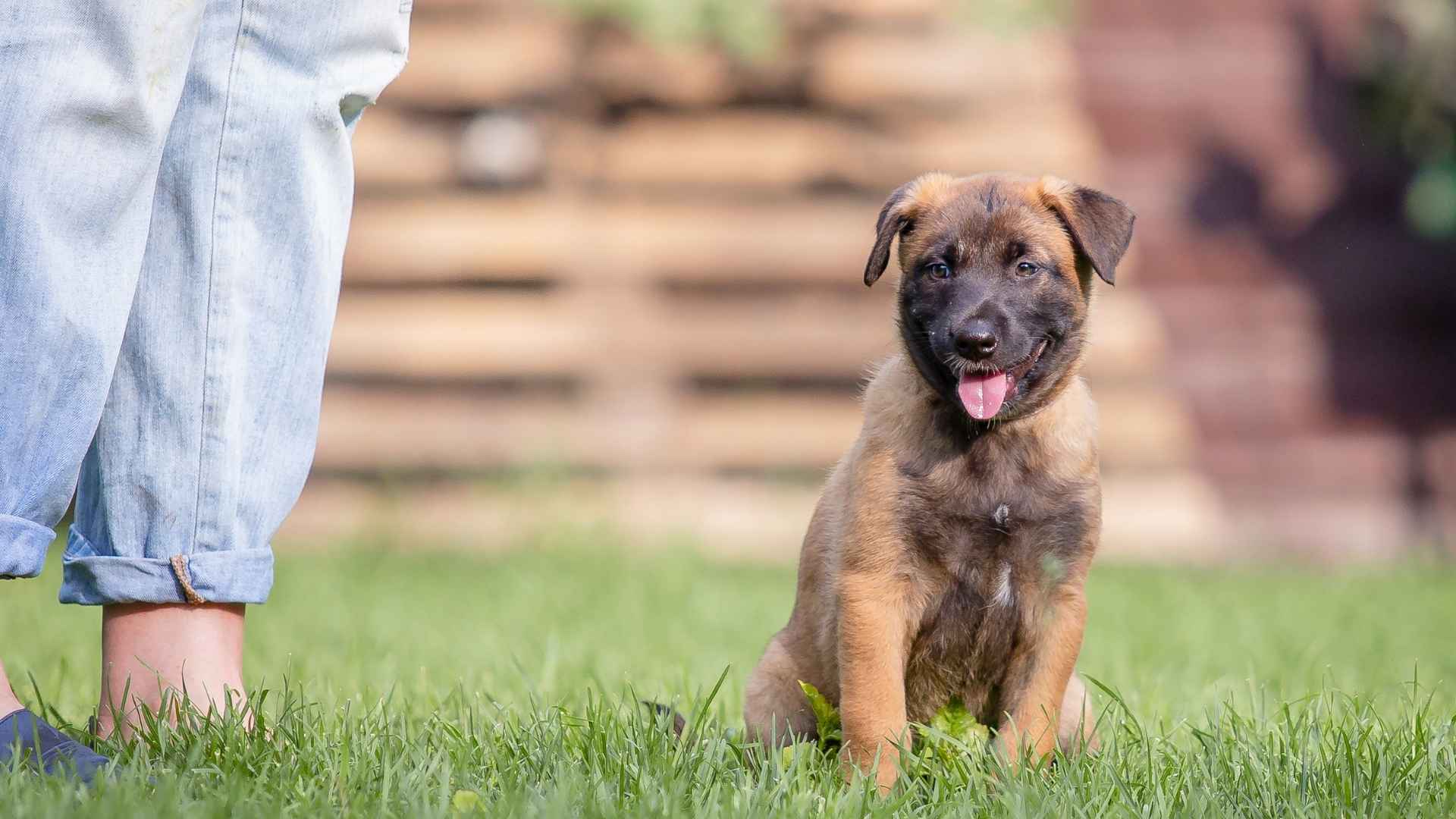Did you know? Puppies as young as 8 weeks old can start learning basic commands—and some can even master them faster than a toddler learns to walk! When it comes to raising a well-behaved dog, picking the right breed from the start can make all the difference. While all puppies are adorable bundles of energy, not all are equally easy to train.
Some breeds are wired to please, eager to learn, and quick to pick up cues from their humans. Whether you’re a first-time dog owner or a seasoned pet parent looking for a smoother training journey, choosing a highly trainable pup sets the stage for fewer headaches and more tail wags. From housebreaking to mastering complex tricks, these breeds make learning feel like playtime.
In this blog, we’ll explore the most highly trainable and smart dog breeds that make raising a canine companion not just doable, but truly delightful.
Highly Trainable Puppy Dog Breeds
1. Border Collie
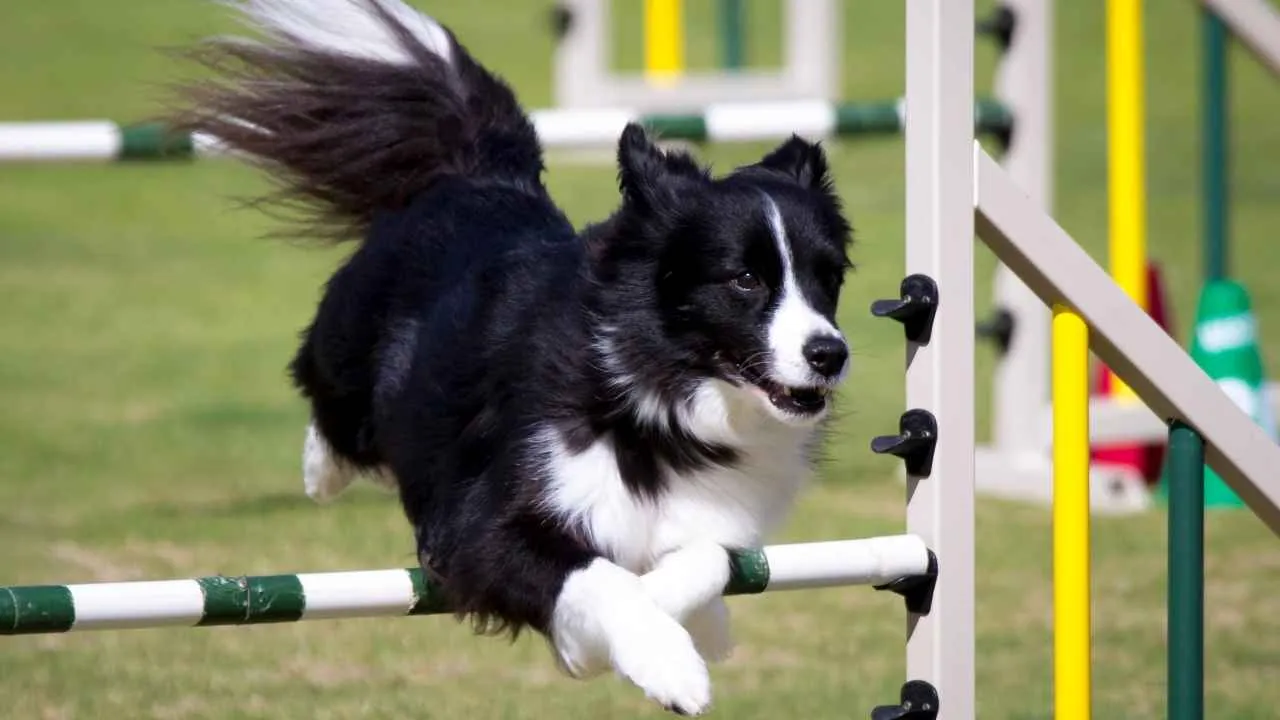
Bred in the borderlands of Scotland and England, the Border Collie is a sheep-herding marvel known for its intelligence, stamina, and uncanny ability to read livestock with a hypnotic stare known as “the eye.”
Once called simply “collies” or “shepherd’s dogs,” these canines found formal recognition after the International Sheep Dog Society was established in 1906. The modern breed traces its roots to Old Hemp, born in 1894, who set the standard for future generations.
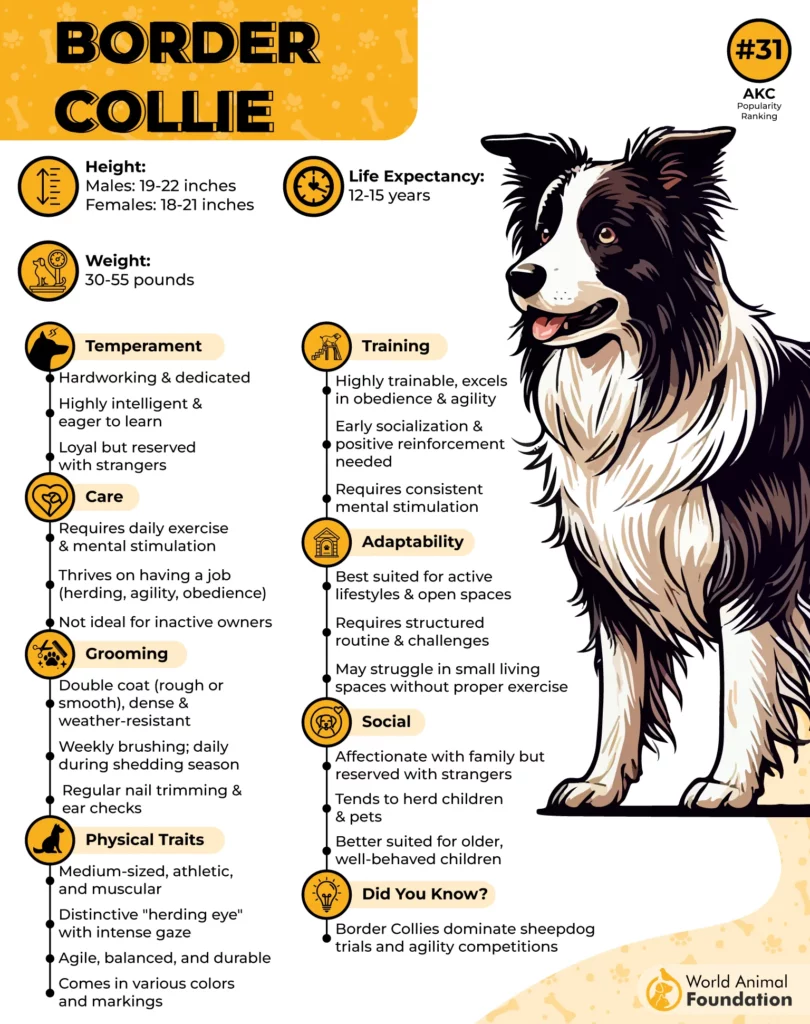
Their original role? Sheep herding dog—and no one does it better. Border Collies combine strength, intelligence, and laser-sharp focus to control flocks with minimal guidance. Their remarkable skills were showcased at the first recorded sheepdog trial in Bala, Wales, in 1873, where spectators were amazed by their responsiveness to hand signals and whistles alone.
Border Collies aren’t just smart dogs—they’re record-breakingly brilliant. Many dog trainers and experts rank them as the most intelligent dog breed in the world.
Record-Holding Border Collies
Chaser: Knew the names of over 1,000 objects.
Jumpy: Skated 100 metres in under 20 seconds.
Striker: Rolled down a car window in 11.34 seconds.
Heroes Off the Farm
Border Collies don’t just shine in the field—they’re lifesavers too.
In 2016, a rescue dog named Blitz found a missing woman under thick foliage in England, succeeding where human searchers had failed.
2. Collie
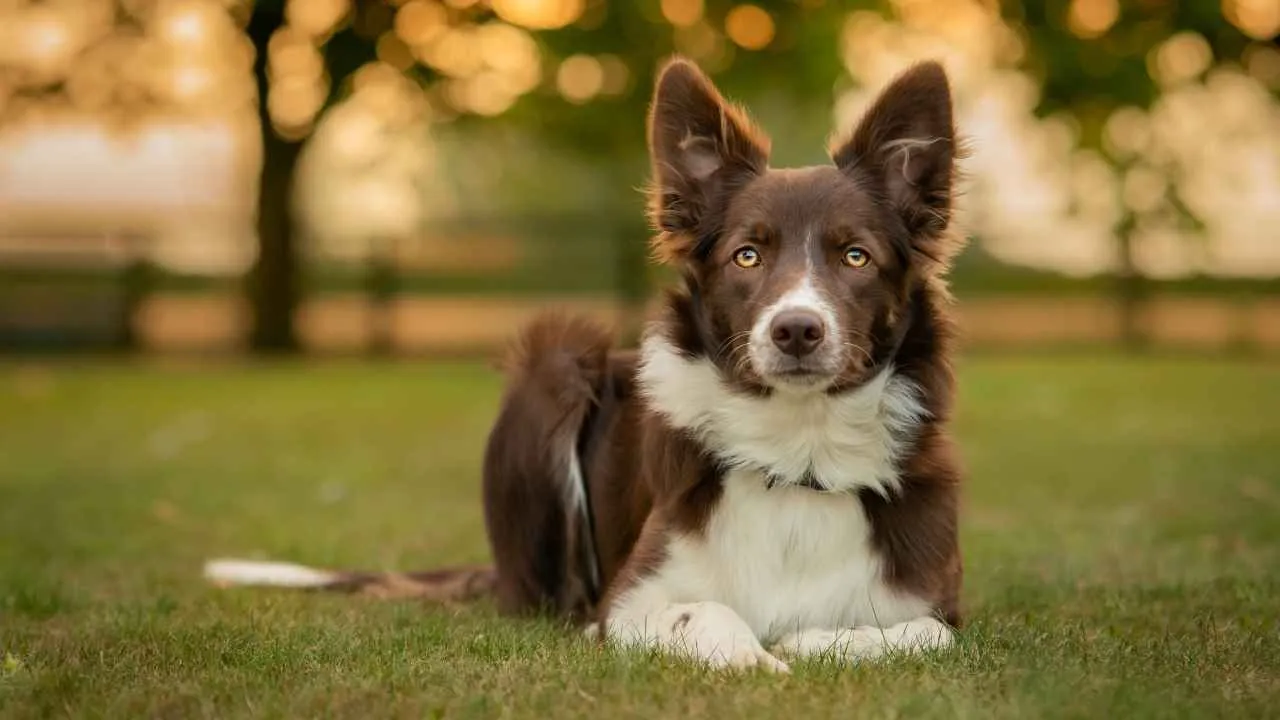
Collies are known for their intelligence, loyalty, and gentle nature. Often compared to the fictional hero Lassie, real-life Collies can be just as brave and devoted—but they require a family that offers kindness, structure, and respect. Harsh treatment can cause them to shut down, while positive training brings out their full potential.
Collies are one of the most highly trainable breeds, thanks to their intelligence, eagerness to learn, and love for positive reinforcement. They respond exceptionally well to gentle, reward-based training and thrive when mentally stimulated through ongoing learning.
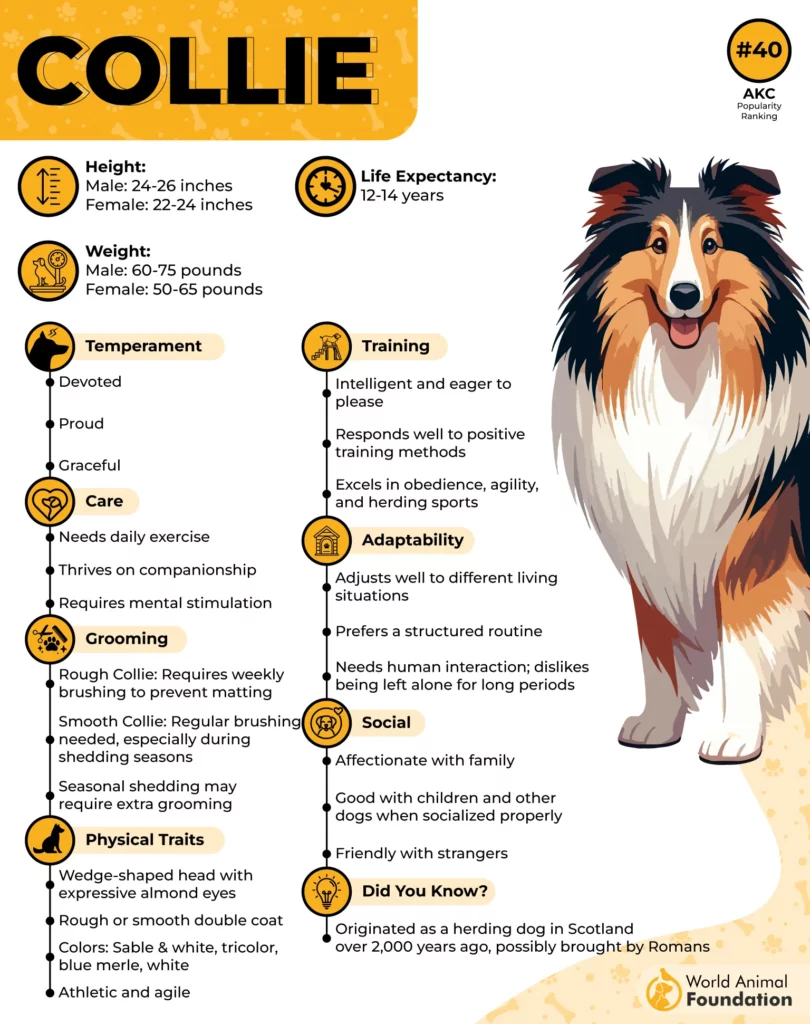
As noted by WebMD, early socialization and puppy classes set a strong foundation, but continued training deepens their bond with their owners and keeps them engaged. Their natural talents also make them ideal for various dog sports and activities.
Training highlights
Fast learners and easy to housebreak
Thrive in obedience, agility, and herding
Enjoy activities like barn hunt and lure coursing
Respond best to reward-based methods
Love attention and naturally enjoy performing
3. Doberman Pinscher
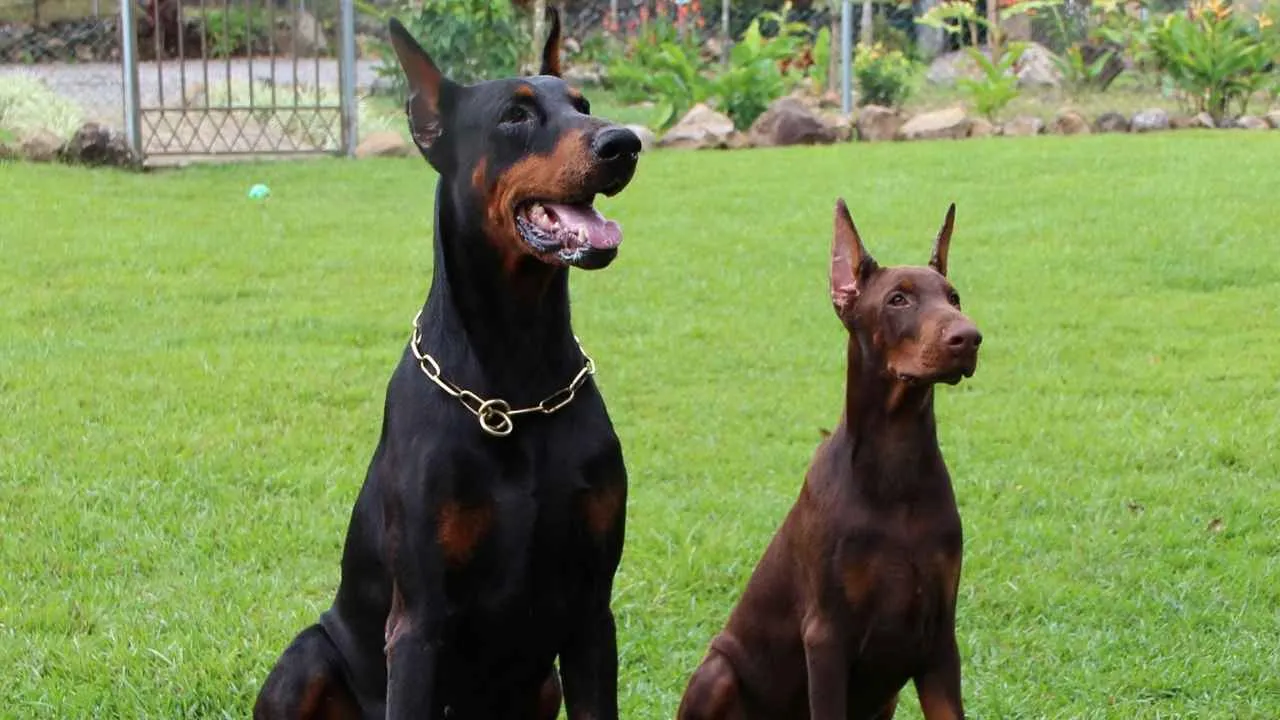
Bred in late 19th-century Germany by Karl Friedrich Louis Dobermann, this powerful working dog was created to be the perfect blend of intelligence, loyalty, and protection. Originally used to guard a tax collector on his rounds, the Doberman remains one of the most trusted guard and service dogs worldwide.
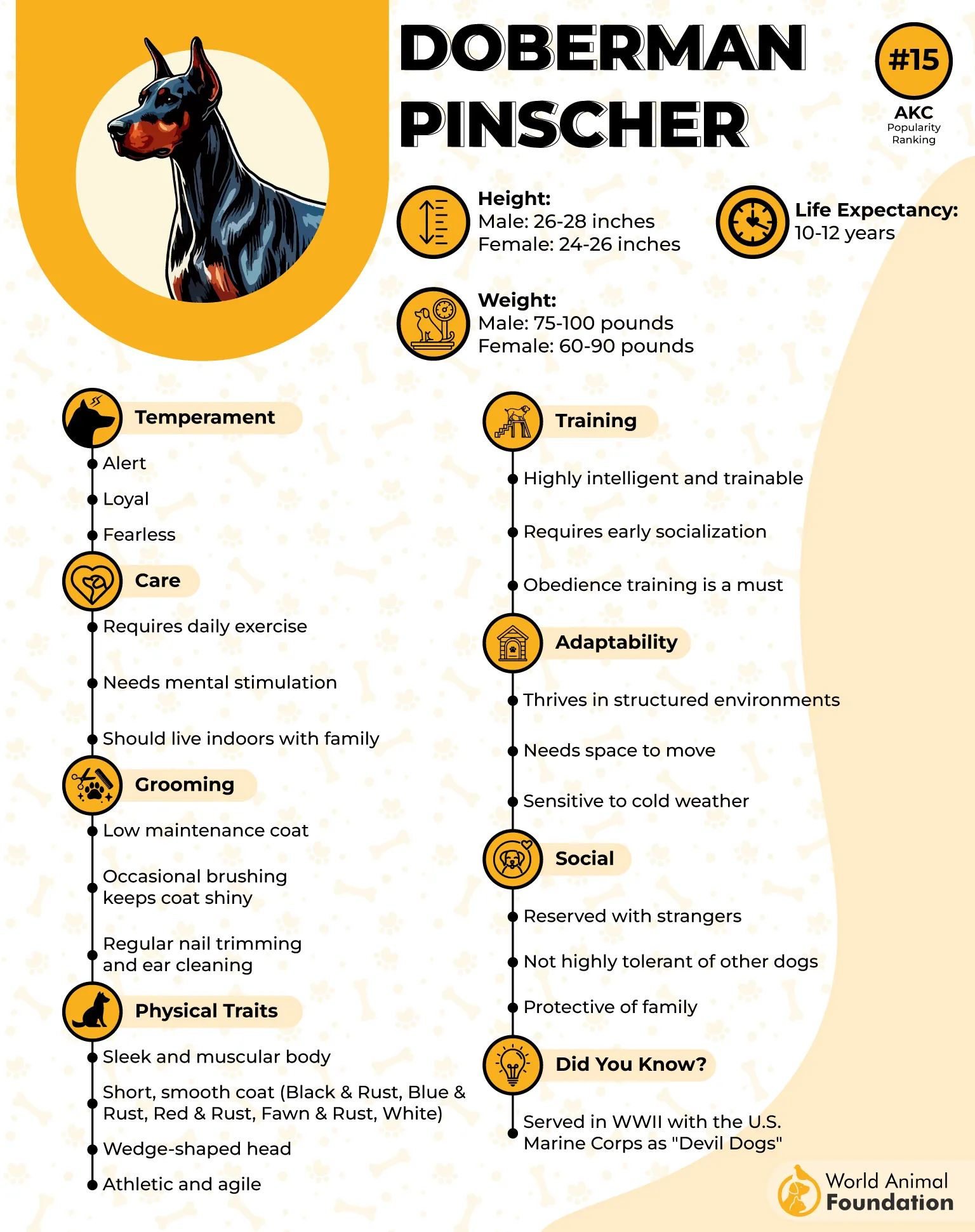
Dobermans are a highly trainable breed, known for their exceptional intelligence, quick learning, and strong desire to please their owners. With the right guidance, they excel in obedience and various dog sports, making them both impressive performers and loyal companions.
Early socialization and consistent training from puppyhood are crucial to ensure they grow into well-mannered, manageable adults. Without proper structure, their strength and energy can lead to pushy or destructive behavior.
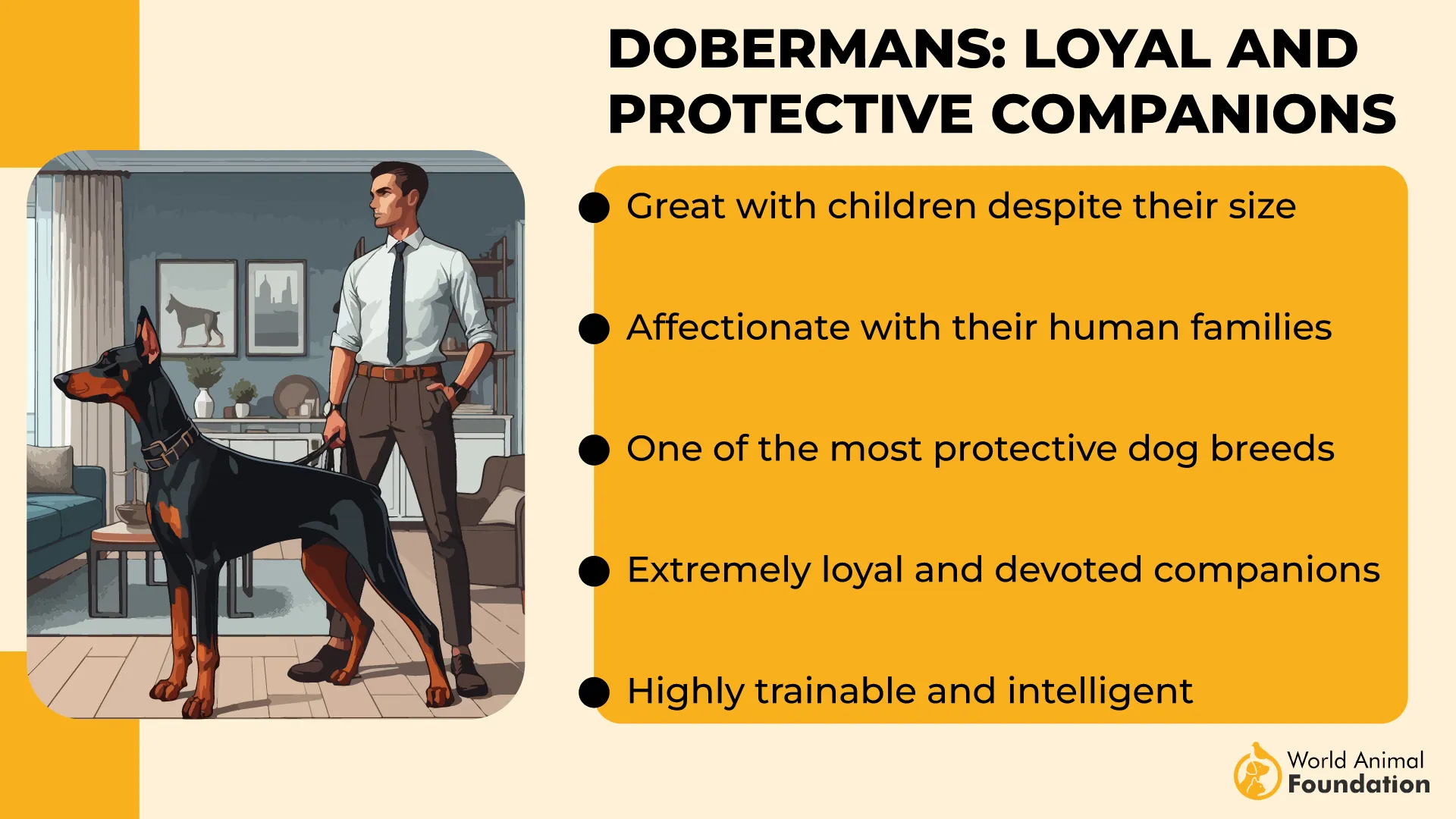
In addition to mental stimulation, Dobermans require daily physical exercise—at least an hour of vigorous activity such as jogging, swimming, or play. They thrive when included as part of the family and should live indoors with their people, not left outside alone. Their drive and athleticism also make them stars in a range of canine sports.
Training and activity highlights
Extremely intelligent and quick to learn
Excel in obedience, agility, Schutzhund, and lure coursing
Need early socialization and structured training
Require daily physical and mental exercise
Perform well in nose work, dock diving, and tracking
Best suited for homes with secure, fenced yards
4. Golden Retriever

In the 1850s, black Wavy-Coated Retrievers and Labrador Retrievers were in fashion in England, though yellow variants had always existed. The Golden Retriever as we know it today was developed by Sir Dudley Majoribanks (Lord Tweedmouth) in the late 1800s through a meticulous breeding program.
Golden Retrievers are among the most highly trainable dog breeds, thanks to their kind temperament, intelligence, and eagerness to please. These traits make them ideal for first-time dog owners, as they respond exceptionally well to positive reinforcement and thrive in structured environments.
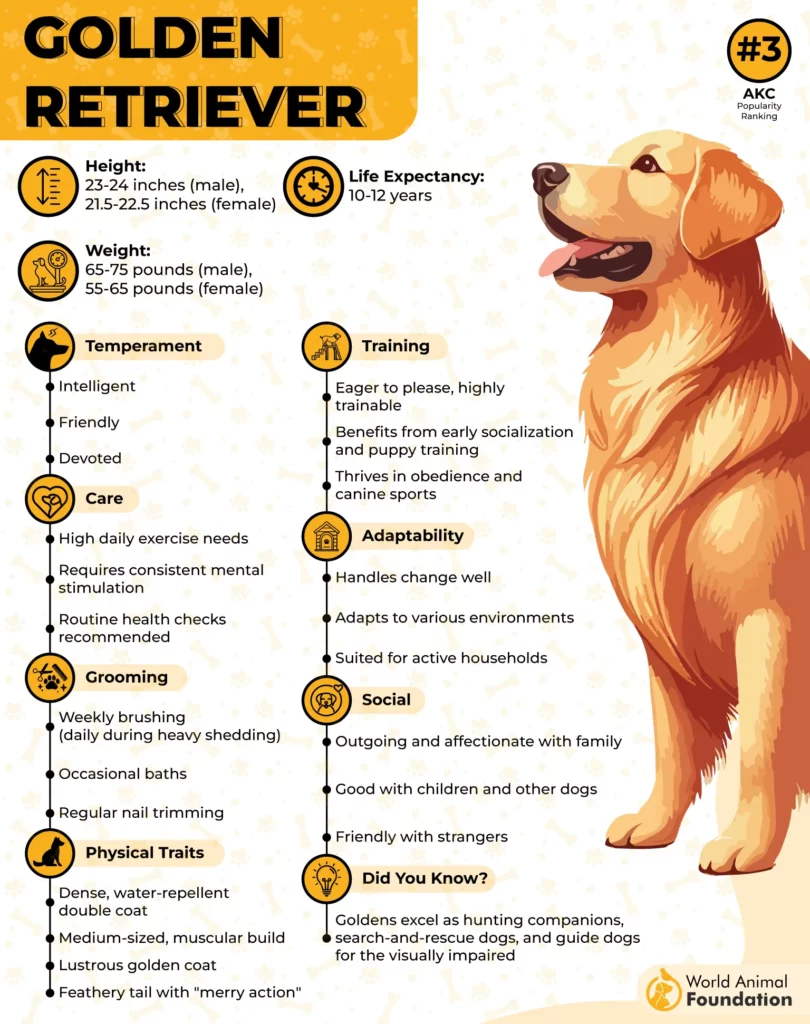
Their friendly and outgoing nature, combined with a playful spirit, helps them stay engaged and enthusiastic during training sessions.
Training and activity highlights
Responds well to positive reinforcement
Easy to train, even for first-time dog owners
Thrives on obedience, agility, and tracking
Enjoys dock diving, bird hunting, and long walks or runs
Needs early socialization for a well-rounded temperament
Loves interactive games like fetch and swimming
Fun Fact:
First called Golden Flat Coats, the breed was officially registered as Golden Retrievers in 1920.
5. Labrador Retriever
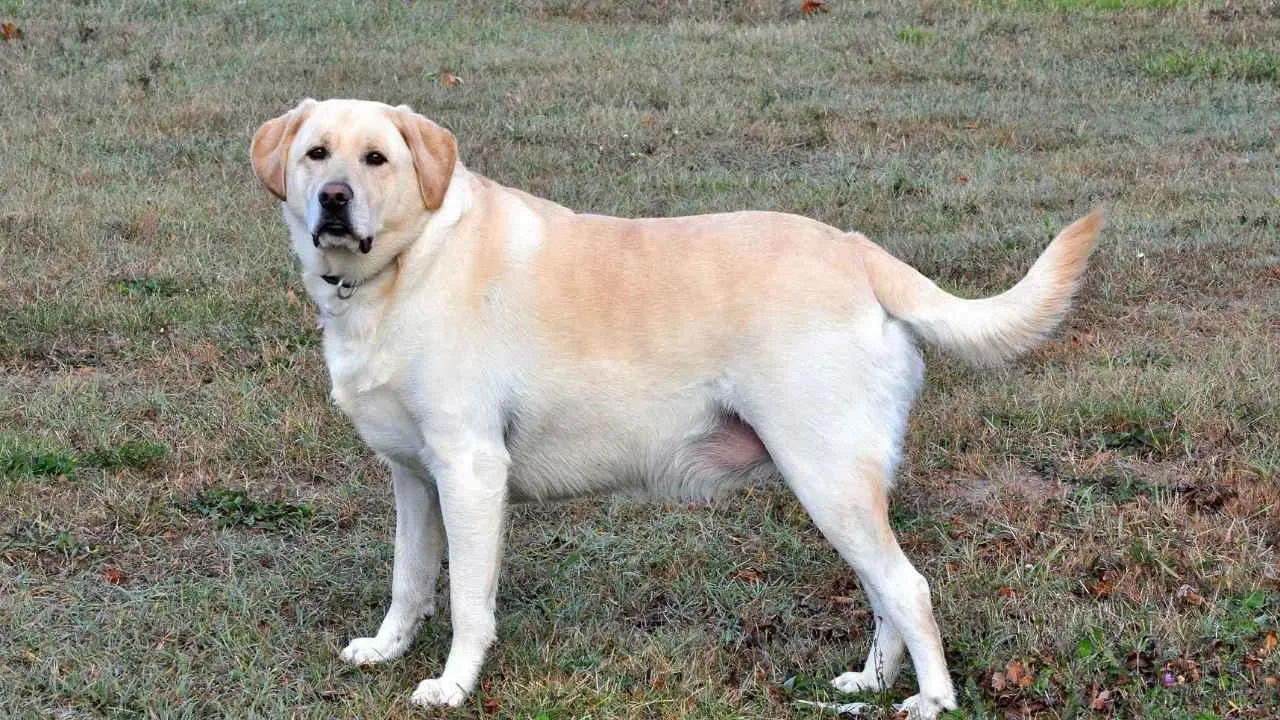
Labrador Retrievers are among the most popular and beloved dog breeds worldwide, known for their intelligence, affection, and easygoing nature. They are great family dogs, being gentle with children and highly trainable.
Labrador Retrievers are widely recognized as one of the most highly trainable dog breeds, thanks to their intelligence, even temperament, and strong desire to please. Their gentle, affectionate nature makes them ideal family pets, especially for households with children. Labs are quick learners and respond well to positive reinforcement, making them a favorite among both first-time and experienced dog owners.

Their high energy levels and playful spirit mean they thrive when given tasks or engaging activities like fetch, swimming, or structured training sessions. With their love for human interaction and eagerness to work, Labradors not only make obedient companions but also excel in various roles, from service and therapy dogs to sporting and hunting partners.
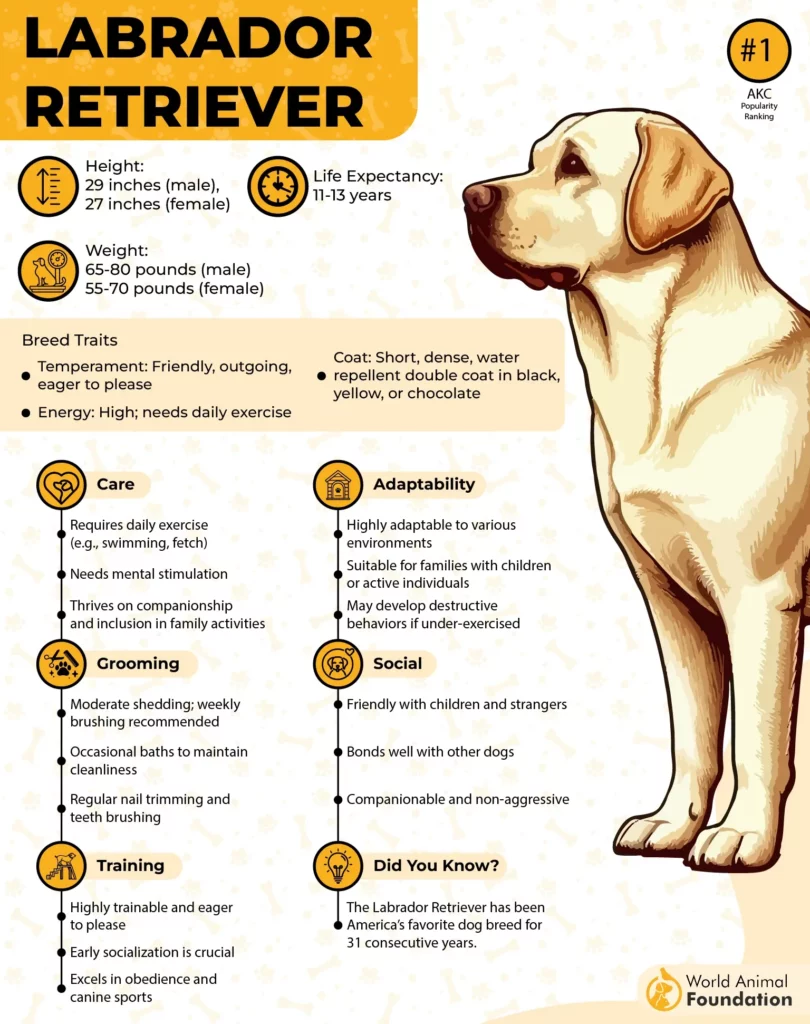
Labrador Color Myth Busting
There’s a common belief that yellow Labs are lazier and black Labs are the best hunters, but this is just a myth.
Color Doesn’t Define Character: A Labrador’s temperament and abilities are more dependent on genetics and training than on coat color.
Each Lab is Unique: Every dog is different, and some breeders focus on performance, while others prioritize appearance.
6. Rottweiler
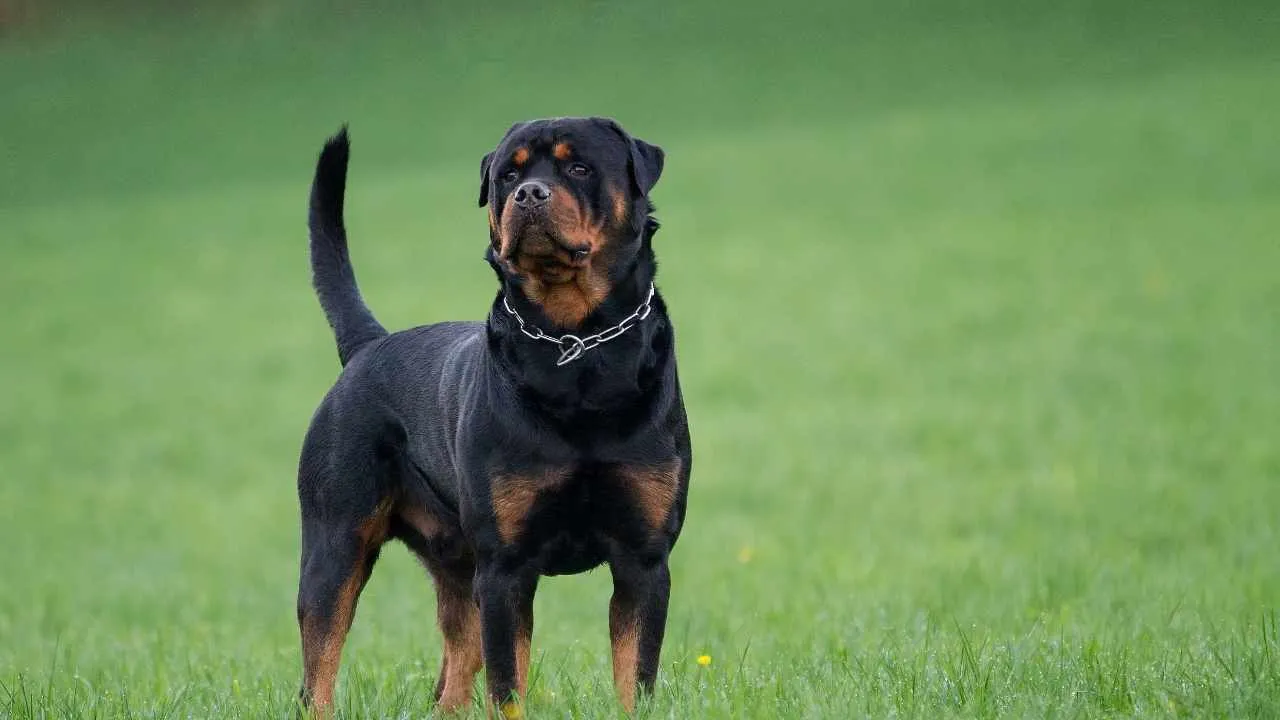
Rottweilers are a highly trainable dog breed, known for their intelligence, loyalty, and deep devotion to their families. Often described as “thinking dogs,” Rottweilers are clever and deliberate, taking time to assess situations before acting, making them excellent learners with the right guidance.
PDSA states that their strength and sharp minds require experienced, confident owners who can provide consistent, positive, reward-based training from an early age.
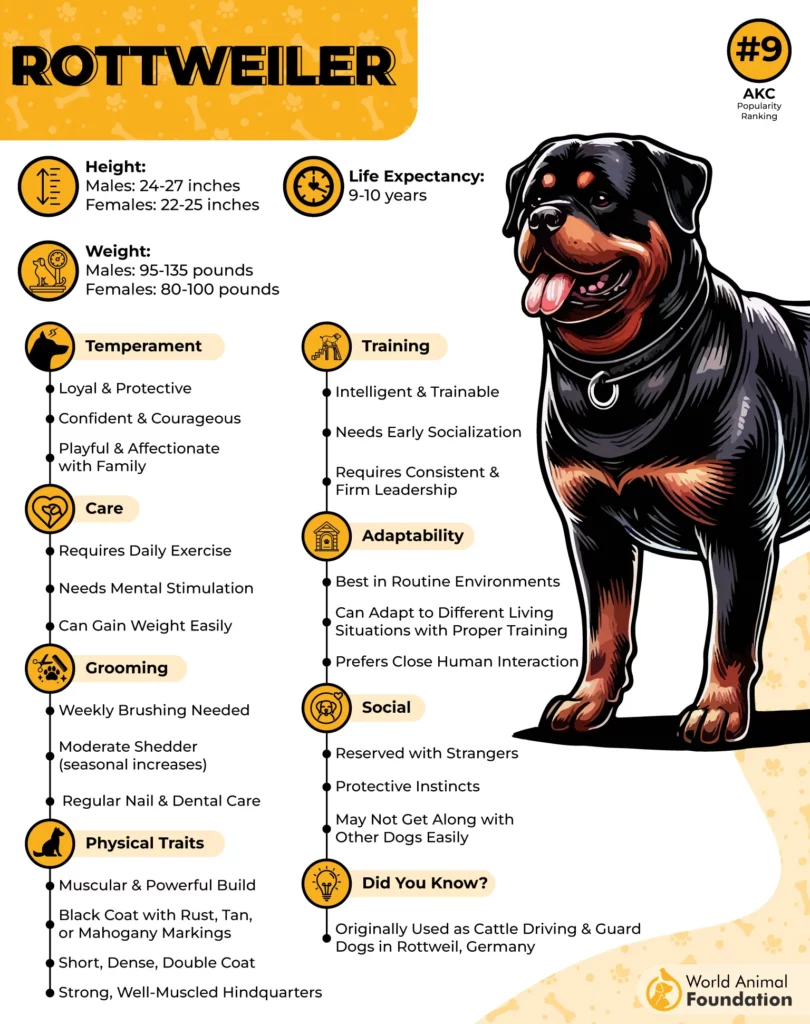
Despite their reputation as intimidating guard dogs, Rottweilers are affectionate, people-oriented, and happiest when close to their families—often forgetting their size and trying to be lap dogs. Their natural protective instincts, combined with a desire to please and impressive problem-solving skills, make them suitable for a variety of roles beyond guarding.
With the right structure, they can excel as service dogs, therapy animals, obedience champions, guide dogs, customs inspectors, and even in physically demanding tasks like carting and drafting.
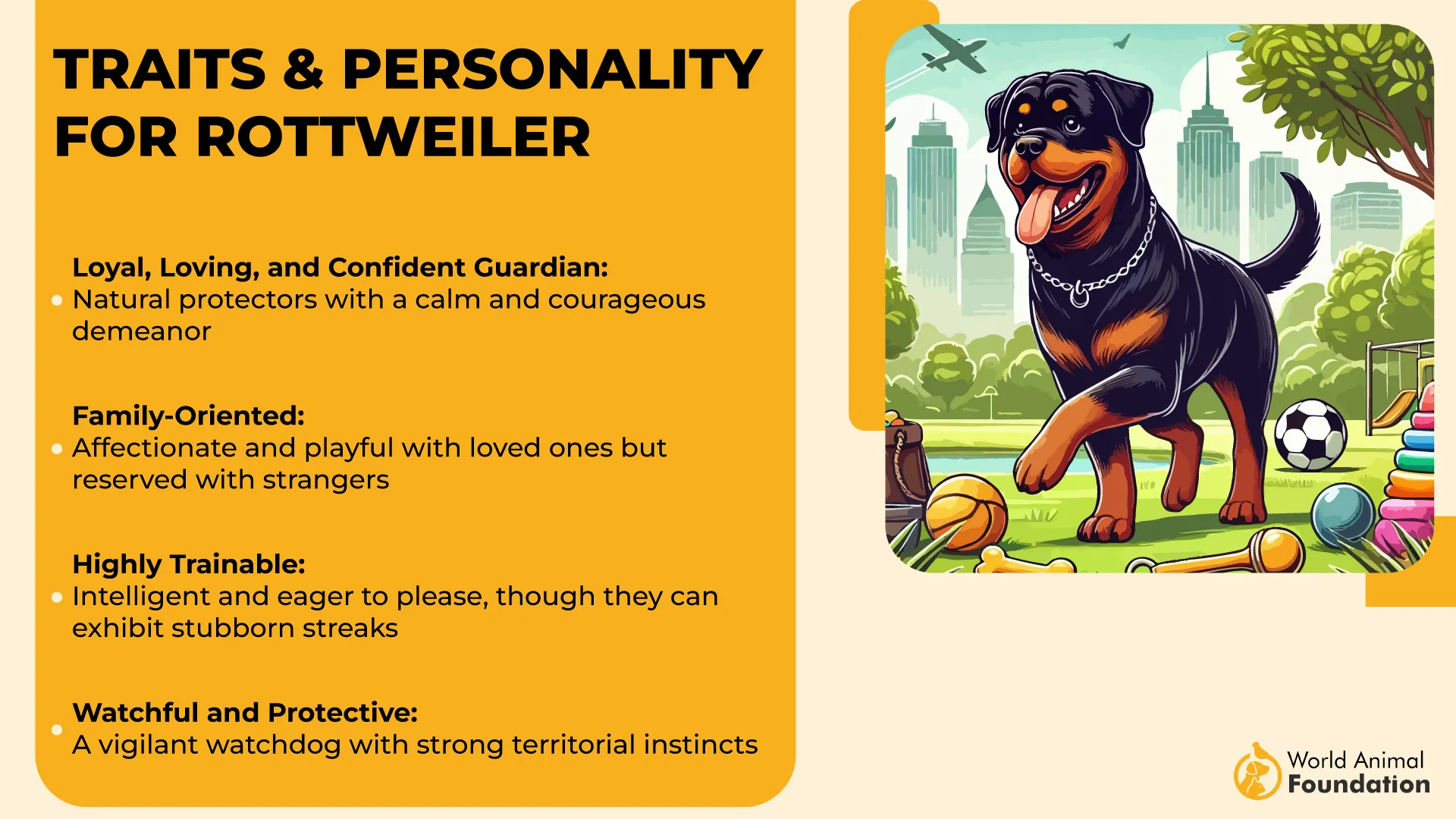
Training and temperament highlights
Intelligent, quick learners with thoughtful decision-making
Deeply loyal, affectionate, and thrive on companionship
Require consistent, positive training
Naturally protective but not aggressive when properly trained
Can be trained for roles such as service work, therapy, obedience, guarding, and carting
7. German Shepherd
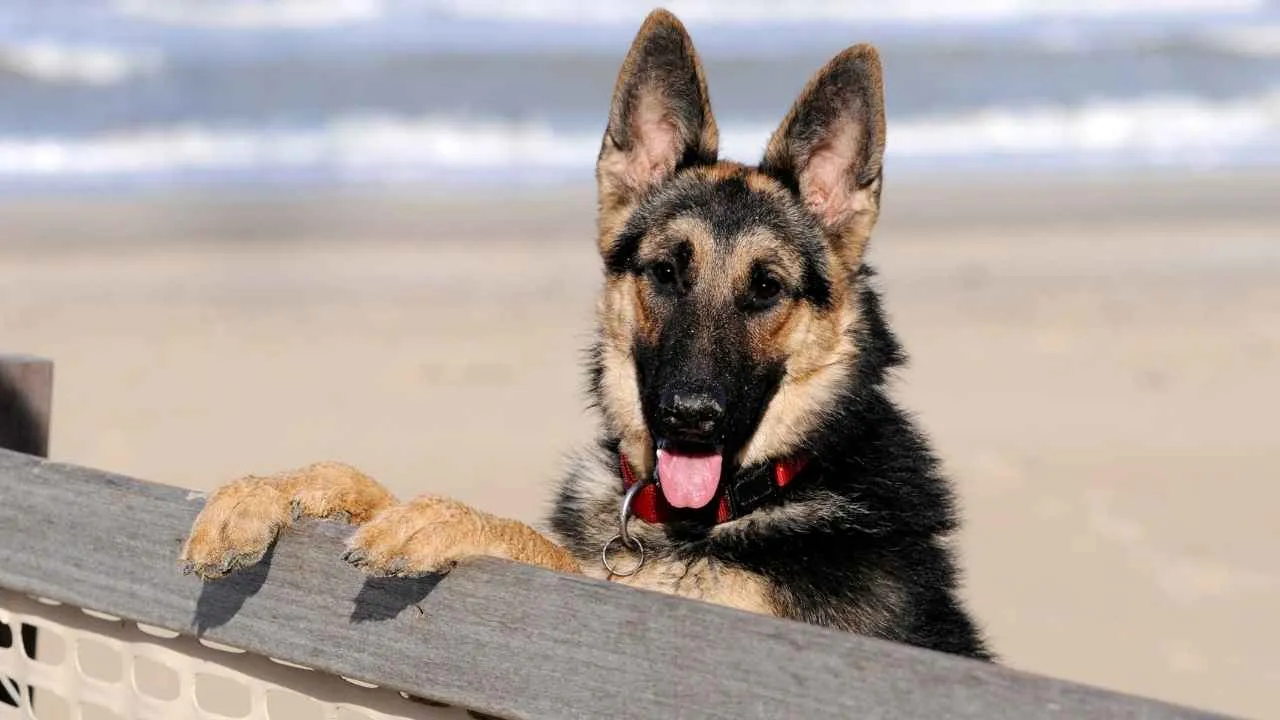
German Shepherds (GSDs) are renowned for their intelligence, loyalty, and trainability, making them one of the most popular breeds worldwide. Originally bred in Germany for herding and protecting livestock, German Shepherds were developed to make quick decisions while staying focused on their handler’s commands.
This foundation of intelligence and adaptability has allowed them to excel in various roles, including police work, search and rescue, service dog tasks, and loyal companionship, fulfilling breed founder Max von Stephanitz’s vision of a versatile, high-performing working dog.
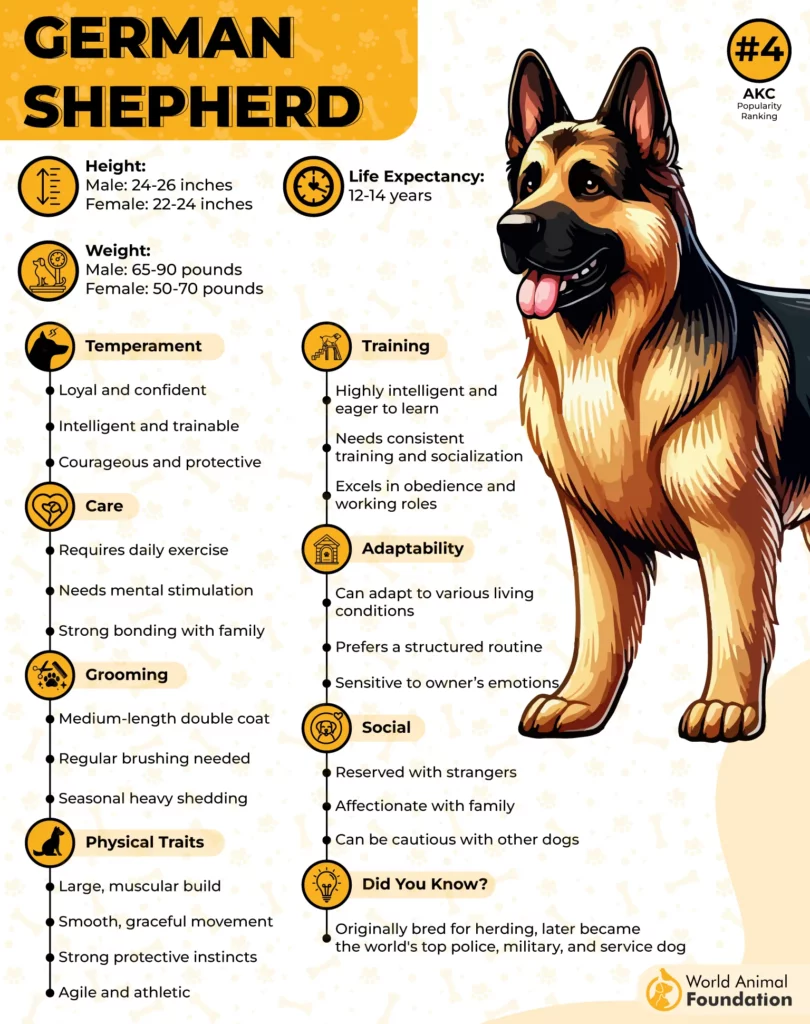
Top-Notch Intelligence
Smart and Quick Learners: Ranked among the top smart dog breeds for their intelligence, GSDs grasp commands and complex tasks rapidly.
Problem-Solving Skills: They can figure out patterns and anticipate commands (like associating a leash with a walk).
Mental Stimulation: To avoid boredom, GSDs thrive on puzzle toys, interactive games, and training sessions.
German Shepherds are deeply loyal and eager to please, forming strong bonds with their families that make them highly responsive to training. Their cooperative nature drives them to perform tasks with enthusiasm, and they thrive on positive reinforcement—whether through treats, praise, or play—making training both effective and enjoyable.
Why German Shepherds Excel in Training
Critical Thinking and Focus: Their history of herding shaped their ability to make decisions and remain attentive to their handler.
Eagerness to Learn: Their loyalty and desire to please make them motivated learners, excelling in both basic obedience and quickly learn complex tasks.
Conclusion
When choosing a trainable puppy, breeds like the Australian Cattle Dog (also called blue heeler), Miniature Schnauzer, German Shepherd Dog, and Australian Shepherd are excellent options for first-time pet parents. These dogs are known for their intelligence, loyalty, and eagerness to please, making them ideal for obedience training.
Whether you’re looking for a small dog or a large dog, certain breeds, such as the English Springer Spaniel, are quick to learn and thrive in active households, excelling in games like fetch and outdoor activities.
For families seeking a more versatile companion, the Doberman Pinscher, Shetland Sheepdog, and English Springer Spaniel are easily trained breeds that excel in various roles, from excellent hunting dogs to loyal pets who protect and keep you company. With their devoted and playful nature, these dogs are perfect for those who want a trainable dog that can quickly adapt and thrive in different environments.


